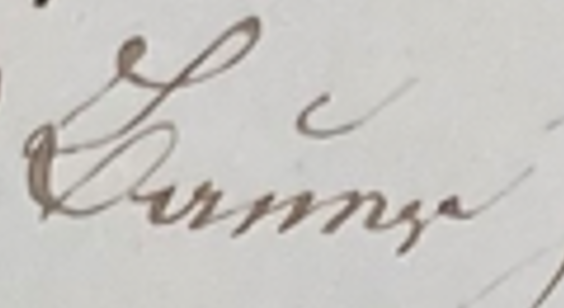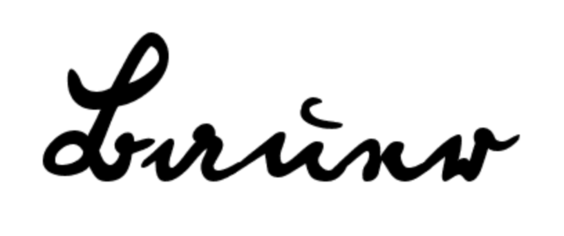Guess that Name Written in Old German Script
I recently saw one of my ancestor’s signatures from 1874. The image below shows his surname. Can you figure it out? It is a very common German surname.

Had I not known what it was, I never would have figured it out. Below is a computer generated version of the same name.1

Can you figure it out now? I’ll give you another hint, it looks nothing like this when written in today’s cursive.
Learning more about this old German script
I research primarily in the English language. When I saw this signature, I knew that the German language was not going to be my only barrier to researching this family line. The surname looks NOTHING like I would expect and I knew immediately this was a script issue.
Since German records are not my area of expertise, I reached out to a community of German researchers on Facebook and asked if they had suggestions of how to learn the old German script and I attached the image I had of my ancestor’s signature.
I received several responses, most of which were helpful. Probably my favorite was a 35-page guide to old german script by Margarete Mucke that explains the letters that are most often confused.2
I went through the guide and looked at all of the letters of my ancestor’s surname.
The first letter is a B.
 | B | According to the guide, a “B” is very similar to an “L”. The “L” in the old script is written the same way I learned how to write a cursive L in third grade. The “B” in this German script adds an extra loop at the end. My ancestor wrote his B with an extra loop at the top, but not an extra one at the bottom. |
|---|---|---|
 | a | A lower case “a” was written similar to a lowercase “o” but with an added downward stroke. My ancestor wrote the “a” very similar to this but left a bigger gap at the top before the loop. |
 | u | A lowercase “u” was very similar to the lower case “n” and very similar to a “u” or “n” in today’s cursive. Since the two letters were written the same, a curve was written above the letter “u” to differentiate it from an “n”. My ancestor did the same. |
 | e | A lower case “e” looks a lot like a cursive “n” in today’s common script. My ancestor wrote the “e” the same way. |
 | r | I don’t know how to describe what a lowercase “r” looks like. It is easier just to show you. My ancestor made some markings somewhat similar but not exact. |
And that was it! B-a-u-e-r. My ancestor’s name was Bauer. Did you guess that correctly? I definitely did not!
My plan (or lack thereof) to learn the German script
As a general rule, I do not research German records since I do not know the language. I have looked up records for some of my German and Swiss German family and I have hired a translator to transcribe and translate them for me. I also hired a Swiss genealogist to help access records in Switzerland.
If I were fluent in German, and planned to continue researching German records in detail, I would plan to learn the old German script. But that is currently not in my plan. For now, I am learning just enough to get an idea of what my ancestors’ names looked like in the old German script so I can find them in documents that are available online.
However, this is reminding me that I have several paleography courses on my to-do list. (Paleography is the study of ancient handwriting). English handwriting is sometimes hard for me once I go back into the 1700s. And some of the documents written in Latin are incredibly difficult. I have watched a few webinars and read articles which I have found useful. But if I want to really learn the script, I would need to learn how to write it.
-
https://www.deutsche-handschrift.de/adsschreiben.php#schriftfeld. This website allows you to see what words would look like in various German scripts. I used my ancestor’s surname and selected the text that looked the most similar to his signature. ↩
-
Margarete Mücke, “A Guide to Writing the Old “Kurrent” Script” (2014). ↩

Comments
Comments powered by Talkyard.